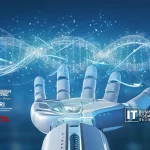スマートな日本のビジネスリーダーにとって、今日のテックシーンは厳しい挑戦です。 クラウド・コンピューティング 大手町から大阪まで、役員室にはさまざまな感情が渦巻いています。アジリティ、イノベーション、そしてグローバルな競争力。この未来はレガシー・システムに依存しています。これらの主要なアプリケーションは、長年にわたって日本経済を支えてきました。これらのシステムは単なる古い技術ではありません。重要な知識を持ち、日常業務を支援し、しばしば企業の取引に不可欠です。
この問題は、単に置き換えについてだけではありません。長年にわたる複雑なコードを全面的に「リフト・アンド・シフト」するという考えは幻想です。それはしばしば大きな混乱と高いコストを引き起こします。今重要な戦略は、最適化と共存に焦点を当てることです。日本企業は古いITシステムを更新できるのか?また、新しいクラウドサービスを導入することはできますか?はい、しかし慎重なアプローチが必要です。慎重な計画、文化への理解、そして斬新なアーキテクチャ・ビジョンが必要です。
単なる負担ではなく、土台
レガシーシステムを単なる障害物と呼ぶのは大きな間違いです。これらのシステムは多くの場合、メインフレームやAS/400のような強力なプラットフォーム上で稼働しています。これらのシステムは、安定性と信頼性の高いトランザクションの時代のために設計されました。何十億円ものトランザクションを管理しているのです。しかも、非常に正確です。複雑なサプライチェーンも管理しています。顧客記録も確実に管理します。新しいテクノロジーは常にこの精度のレベルに達することはできません。惰性的と思われがちな新技術は、しばしばその成功を示しています。あまりにうまく機能しているため、変更のリスクが報酬よりも大きく感じられるのです。
こちらもお読みください: 世界の従業員体験とリテンションを変える鍵はAI?
この強みは、デジタル時代には逆に弱みになることもあります。これらのシステムは柔軟性に欠けます。重要な情報を保管するデータサイロができます。最新のSaaSアプリとの接続は困難です。また、人工知能の使い方も制限されます。そのため、新しい市場チャンスへの対応が遅れてしまいます。SaaSの運用に必要なスキルは希少になっています。これは大きな運用リスクを生み出します。課題は、そのコア・バリューを尊重しながら、その中にあるデータや機能を解き放つことです。これをさらに悪化させているのが、人材プールの縮小です。日本企業を対象とした最近の調査では、以下のようなことが明らかになりました。 60% の日本企業がいまだにレガシーシステムを保有。世界全体では 70% 企業のビジネス・システムのうち60%以上がレガシー・アプリケーションであり、IT予算の60%以上がレガシー・アプリケーションの保守に費やされています。
クラウドの必要性
クラウドが提供するのは、単に運用コストを処理する新しい方法だけではありません。 クラウド プラットフォームは、日本企業がイノベーションを起こし、世界で競争するためのユニークな機会を提供します。ピーク時の負荷に対応するオンデマンドのスケーラビリティ。高度な分析ツールこれらのツールは、大規模なデータセットから洞察を得るのに役立ちます。グローバル・インフラは、国際市場で新しいデジタル・サービスを数年ではなく数日で立ち上げることができます。
優れた企業は、クラウドが新しいアプリケーションのためだけのものではないことを知っています。クラウドは、レガシー・エステートそのものを近代化するために利用できる強力な力なのです。目標は、共生的な結びつきを形成することです。そのためには クラウド は、古いシステムに新しい息吹を吹き込みます。これらのシステムは、クラウドベースのイノベーションのための強力な基盤となります。これは二者択一ではなく、必要な統合なのです。
徐々に近代化する技術
この最適化された状態への道は、1つのプロジェクトだけではありません。アーキテクチャーの長期的な成長プログラムなのです。それには慎重で段階的な計画が必要です。この計画は、過去を尊重し、未来に備えるものでなければなりません。
重要な最初のステップは、アプリケーションの完全なインベントリと評価を行うことです。これは単純な監査ではありません。各レガシー・コンポーネントを、そのビジネス価値、技術的問題、他のコンポーネントとの関連性に基づいて評価します。このプロセスにより、廃止すべきシステム、残して改善すべきシステム、クラウドネイティブな将来に向けて更新または再設計可能なシステムが見つかります。
現在、より多くの企業が主要なシステムにAPI主導のコネクティビティを使用しています。組織は、古いシステムの上に最新のアプリケーション・プログラミング・インターフェース(API)を作成することができます。これにより、新しいクラウドアプリとデータやビジネスロジックを安全に共有することができます。ある大手銀行は、クラウドでホストされた新しいモバイルバンキングアプリを使用しています。明確なAPIを使用して、メインフレームからリアルタイムの口座情報に安全にアクセスできます。レガシー・システムはそのままですが、その価値は上がっています。デジタルの世界でアクセスできるようになったのです。
ハイブリッドクラウド アーキテクチャーは現在、この変化の規範となっています。世界的に 69% の企業がハイブリッド・クラウドを採用しており、2024年までに82%の企業ワークロードがハイブリッド環境で運用される見込みです。このモデルでは、企業は機密性の高いワークロードをオンサイトまたはプライベート・クラウドに置くことができます。これは規制上の理由やパフォーマンス向上のためです。また、これらのタスクをパブリック・クラウド・サービスと連携させます。そこでイノベーションが促進されます。このバランスの取れた方法はリスクを軽減します。また、新しいことに挑戦することもできます。三菱UFJフィナンシャル・グループはその重要な例です。三菱UFJフィナンシャル・グループはハイブリッド・クラウド戦略を開始しました。これはデジタル・バンキング・サービスの向上を目指すものです。同時に、コア・バンキング・システムのセキュリティと安定性を確保します。
人間的・文化的側面

最大の課題は技術ではなく、文化です。日本の企業文化は安定を重んじます。リスクを避け、コンセンサスを重視します。強い価値観はデジタルトランスフォーメーションを遅らせる可能性があります。
この変化の背後にある理由を説明するには、強力なリーダーシップが必要です。モダナイゼーションは、リスクの高いITプロジェクトというだけではありません。将来の成長と顧客との関係を維持するための鍵なのです。継続的な学習と柔軟な成長の文化を創造することが不可欠です。これは、経験豊富なメインフレームの専門家と若いクラウドネイティブの開発者がチームを組むことを意味するかもしれません。こうすることで、知識を共有し、新旧のアイデアを組み合わせることができます。富士通と日立は、大規模な再教育プログラムに資金を投入しています。変革の成功の鍵は人材です。
政府と産業界は行動を起こしています。2025年5月、日本の経済産業省はデジタル社会重点計画の一環として、レガシーシステムの近代化に関する包括的な報告書を発表しました。この報告書では 2025年デジタルの崖」、IT資産可視化のためのツール、自己評価ガイドライン、継続的学習プラットフォームの開発を促します。
今後の旅のための実用的な洞察
この道を考えているリーダーにとって、その旅は明確なビジョンから始まります。テクノロジーではなく、明確なビジネス目標から始めましょう。顧客体験を向上させたいのか?製品開発のスピードアップ?それとも新しい市場の開拓ですか?その目標をもとに、モダナイゼーションの優先順位を決定してください。
大きなインパクトのあるシンプルなプロジェクトから始めましょう。迅速に本当の価値を提供し、勢いをつけるのに役立つはずです。1つの顧客向けアプリのアップデートのようなパイロットプロジェクトが成功すれば、コンセプトを証明することができます。それは、より大きな旅のためのより多くのサポートと資金を得ることができます。
パートナーシップを受け入れましょう。この複雑なタスクに対して、単一のベンダーがすべての答えを持っているわけではありません。レガシー統合やクラウド移行を得意とする技術パートナーを探しましょう。彼らは日本のビジネスシーンのユニークな部分を理解しているはずです。
シナジーで築く未来

日本企業が歩んできた道のりは、急激な変化ではありません。むしろ、慎重かつ思慮深い進化なのです。目指すのは近代的な 情報技術 セットアップ最適化されたレガシーシステムと柔軟なクラウドワークロードは、ここで互いに支え合います。この未来では、メインフレームの伝説的な信頼性が安定したコアとして機能します。そして、クラウドネイティブなイノベーションは、その周りを回ることができます。日本のビジネスリーダーは、賢く慎重になることで、その強力な遺産を尊重することができます。つまり、文化を意識するということです。そして、未来に向けて、迅速かつ堅牢で、革新的な企業を創造することができるのです。古いものと新しいものが一緒に働くことができるのです。この調和が、永続的な競争力には不可欠なのです。






